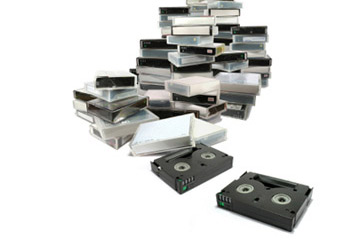Here at DVD Your Memories we are experts in all things involving media technology. Our video technicians are trained to understand many of the popular digital video formats available today. AVI, MOV, H264, MPEG, MTS, it may sound like technical jargon to some, but to us it’s our native language. We will help you navigate the technological terrain.
Talk to our technicians about specific formats you may need and leave the details to us.

| DVD Your Memories | |
|---|---|
| Pricing (per file)* | $19.99 |
| *Above pricing applies to video tapes up to 2 hours, tapes exceeding that time are $10 per each additional 2 hours. | |
| High Definition | |
|---|---|
| Pricing (per file)* | $29.99 |
| *Above pricing applies to video tapes up to 2 hours, tapes exceeding that time are $10 per each additional 2 hours. | |

Get your brand new converted video hosted online for your friends, family and the WORLD to SEE! We can even help you create an account and upload your masterpiece. Please ask your editor for more information and pricing.

Have your converted video upgraded to Blu-ray and watch your footage in high definition video! Video must be converted to high definition video. Once converted we will transfer to our Blu-ray discs. For more information about our Blu-ray services, please visit our Blu-ray transfer page.
Sign up and receive a FREE
Media Organization Guide plus exclusive discounts with our monthly newsletter.
Clairemont Mesa, Del Mar, La Jolla, Mission Beach, North Park, Pacific Beach, Torrey Hills, Torrey Pines, University City, Carmel Mountain Ranch, Miramar, Mira Mesa, Rancho Bernardo, Rancho Penasquitos, Sabre Springs, Scripps Ranch, Sorrento Valley, Kearny Mesa, Mission Valley East, San Carlos, Serra Mesa, Tierrasanta, Hillcrest, Linda Vista, Morena, Ocean Beach, Oceanside, Old Town, Pacific Beach, Point Loma, Shelter Island, Sunset Cliffs, University Heights, Balboa Park, Bankers Hill, Lemon Grove, El Cajon, Santee, Lakeside, La Mesa, Poway, Encinitas, Chula Vista, Cardiff, Leucadia, Eastlake, Bonita, Vista, Imperial Beach, National City, San Marcos, Solana Beach, Alpine, Fallbrook, Jamul, Harbison Canyon, Borrego Springs, Casa de Oro, Mount Helix, Spring Valley
Acton, Alhambra, Altadena, Arcadia, Avalon, Azusa, Baldwin Park, Bellflower, Bell Gardens, Bell, Beverly Hills, Burbank, Calabasas, Carson, Century City, Cerritos, Claremont, Compton, Covina, Culver City, Diamond Bar, Downey, Duarte, Eagle Rock, East Los Angeles, El Monte, El Segundo, Encino, Gardena, Glendale, Glendora, Hawaiian Gardens Hawthorne, Hermosa Beach, Huntington Park, Inglewood, Irwindale, La Canada Flintridge, La Mirada, La Puente, La Verne, Lakewood, Lomita, Lancaster, Long Beach, Los Angeles, Lynwood, Malibu, Manhattan Beach, Marina Del Rey, Maywood, Monrovia, Montebello, Monterey Park, Montrose, Northridge, Norwalk, Palmdale, Palos Verdes Penninsula, Paramount, Pasadena, Pico Rivera, Pomona, Rancho Palos Verdes, Redondo Beach, Rosemead, San Dimas, San Fernando, San Gabriel, San Marino, San Pedro, Santa Clara, Santa Fe Springs, Santa Monica, Sierra Madre, South El Monte, South Gate, South Pasadena, Sunland, Studio City, Tarzana, Temple City, Toluca Lake, Torrance, Tujunga, Valencia, Van Nuys, Venice, Verdugo City, Vernon, Walnut, West Covina, West Hollywood, Whittier
Aliso Viejo, Anaheim, Avalon, Brea, Buena Park, Commerce, Corona, Costa Mesa, Cudahy, Dana Point, Duarte, Foothill Ranch, Fountain Valley, Fullerton, Garden Grove, Hawaiian Gardens, Hidden Hills, Huntington Beach, Industry, Irvine, La Habra, La Miranda, La Palma, La Puente, La Verne, Laguna Beach, Laguna Hills, Laguna Niguel, Lake Forest, Lawndale, Los Alamitos, Mission Viejo, Newport Beach, Palos Verdes Estates, Placentia, Rancho Santa Margarita, Rolling Hills Estates, Rolling Hills, Sierra Madre, Signal Hill, San Clemente, San Juan Capistrano, Santa Ana, Seal Beach, Stanton, Tustin, Vernon, Villa Park, Yorba Linda
Denver, Aurora, Highlands Ranch, Centennial, Greenwood Village, Glendale, Littleton, Thornton,Lakewood,Sheridan, Cherry hills Village, Englewood, Lone Tree, Wheatridge, Arvada, Westminster, Parker, Golden, Northglenn, Castle Rock
92656, 92698, 92801, 92802, 92803, 92812, 92821, 92822, 92823, 90620, 90621, 90622, 92625, 92626, 92627, 92628, 90630, 92629, 92650, 92609, 92610, 92708, 92728, 92831, 92840, 92842, 92846, 92605, 92602, 90631, 92637, 92630, 92690, 92658, 92856, 92672, 92675, 92701, 92780, 92885
92007, 92009, 92014, 92024, 92025, 92026, 92027, 92029, 92040, 92064, 92065, 92067, 92069, 92071, 92075, 92078, 92091, 92111, 92117, 92119, 92120, 92121, 92122, 92123, 92124, 92126, 92127, 92128, 92129, 92130, 92131
80303, 80305, 80027, 80026, 80020, 80614, 80602, 80614, 80601, 80603, 80020, 80640, 80603, 80022, 80007, 80021, 80031, 80030, 80003, 80004, 80403, 80002, 80111, 80110, 80113